I’m Newly-Obsessed With The Japanese-Style Method For Making Iced Coffee At Home (And Honestly, American Cold Brew Doesn’t Even Compare)
It's officially iced coffee season, folks, and I'll be damned if I touch even a single sip of hot coffee to my lips until fall rolls around — at the very earliest. But with this current wave of inflation continuing to do the most, my wallet simply cannot handle the amount of coffee shop visits that it used to.
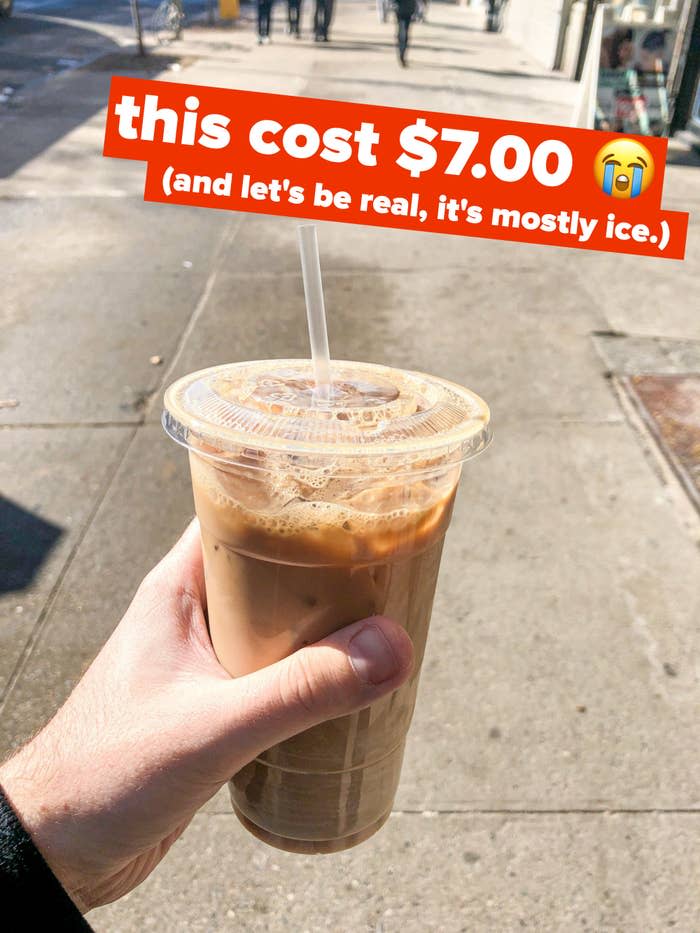
Starbucks already announced price increases for 2022, and many local coffee shops and cafés have had to take similar actions just to be able to offset the increasing costs of things like coffee beans, disposable cups, and even rent. The large iced coffee above (from my local coffee shop in Manhattan) cost me — wait for it — $7. And that's before the tip.
After officially adopting summer 2022 as the Summer Of Making My Own Iced Coffee, I've been somberly researching my at-home iced coffee options. DIY cold brew? That was fun for about two days, but as someone who can't even pack a suitcase until the very last minute, planning my morning coffee 24 hours in advance was a nonstarter. Then there's my usual method of just stashing the entire pot of brewed coffee in the fridge until it's cold. Listen, for a food writer whose life basically revolves around food, I'm famously unfussy about my coffee...but that cloudy, bitter, leftover coffee was never gonna cut it.
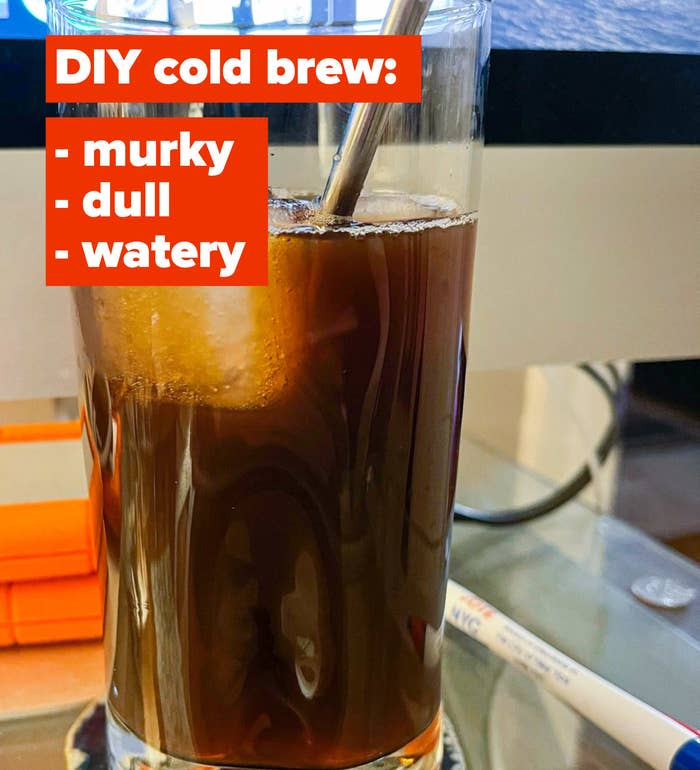
As I do to mitigate many of my issues these days, I quickly found my way to TikTok, where it didn't take long for me to rediscover an iced coffee method that I'd totally heard of before (but never really thought to try): Japanese-style iced coffee.
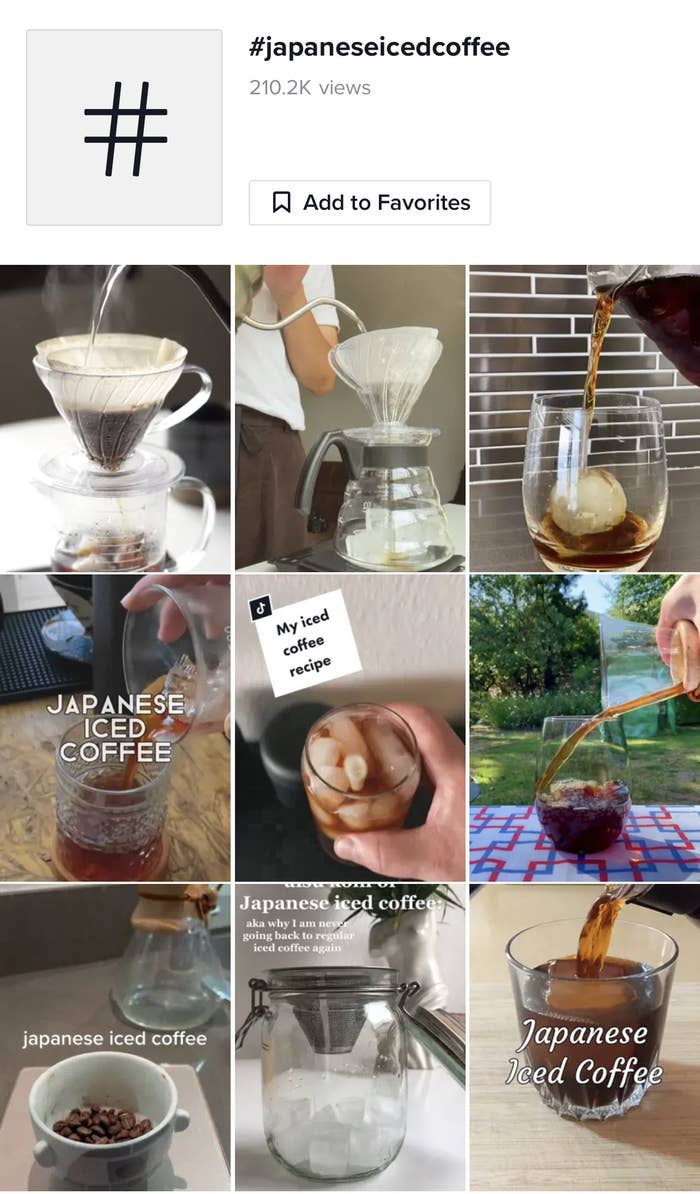
As the name suggests, this method of brewing iced coffee through flash-chilling has been popular in Japan for decades, where summers are notoriously hot and humid (and the relief of a cool glass of iced coffee is a welcome respite). Even the 7-Elevens in Japan serve their iced coffee this way, letting customers grab a pre-measured cup of ice for freshly-brewed coffee to be dripped directly into. The technique supposedly made its way to the States in the late '90s after Counter Culture's coffee director took a trip to Japan, though it's nevertheless remained a pretty "under the radar" brewing method over the years.
The method itself produces a cup of coffee that's robust in flavor yet still as velvety-smooth as a cold brew. In fact, the flavor notes are known to be even more pronounced than in cold brew, which can occasionally taste a bit muted. Translation: It's a seriously delicious way to prepare iced coffee — so delicious, in fact, that a friend of mine even claims it's "the reason she started drinking coffee" while spending time in Japan. And y'all, after trying it for myself in my own home, I've been hooked ever since.
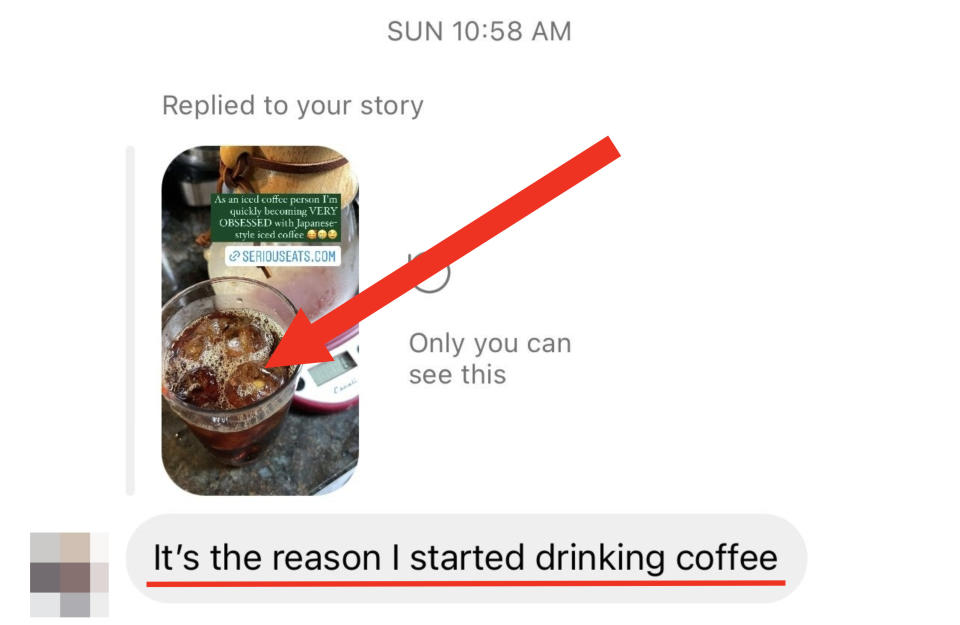
Beyond tasting even better than cold brew (and coming together much more quickly), it also uses less coffee to begin with. That means you're getting much better bang for your buck, and in this moment of chaotic inflation, I'll happily pinch every penny I can.
I'll be the first to admit that when we start to enter the territory of pour-over coffees and "artisanal" this or that, the coffee snob culture of it all can start to feel reaaally pretentious really fast. So in an effort to make this as user-friendly as humanly possible, I'm gonna give you multiple pathways for arriving at the same, delicious result: one for the folks who like to measure everything with precision, and another for those of you who don't feel the need to get all that granular.
Ross Yoder
Don't come at me, coffee people...but I'll even give you a method to loosely recreate this technique using a standard drip coffee maker.
WHAT YOU'LL NEED:
To make Japanese-style iced coffee the traditional way, you'll need one of the myriad devices that exist for making pour-over coffee — basically, any sort of device that allows you to manually pour hot water over coffee grounds and into a holding vessel. I personally use a Chemex, but you can pretty much use any other pour-over dripper placed over a vessel large enough to hold the final brew, like this budget-friendly V60 dripper. Just make sure you're using a proper paper filter so your batch of iced coffee will be free of any sediment or cloudiness.
In addition to the pour-over device of your choosing, you'll need a properly-sized paper filter, ice, a kettle, and of course: coffee. While having a scale that measures in grams is also preferred, it's not entirely necessary. If you don't have one, rest-assured I'll also provide the quantities in good old cups 'n' tablespoons where applicable.
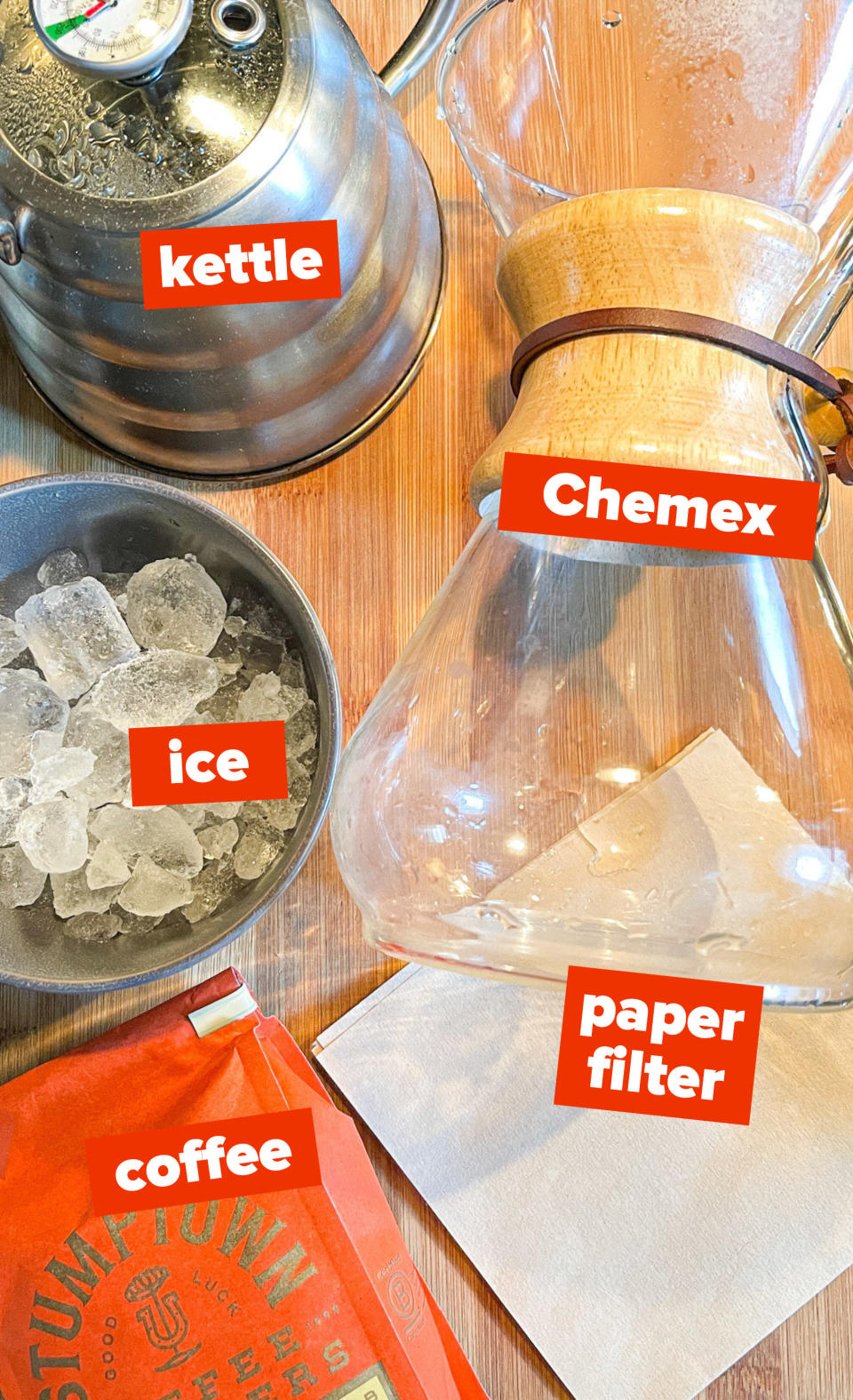
HOW TO MAKE IT:
With the exception of the hands-off process of actually heating the water, a batch of Japanese-style iced coffee comes together in under five minutes. Last I checked, that's about 23 hours faster than making a batch of cold brew. This recipe yields about two generously-sized glasses of iced coffee, so feel free to adjust the ratios up or down depending on how much you need to make in the first place.
STEP #1: Bring your kettle of water to a near-boil.
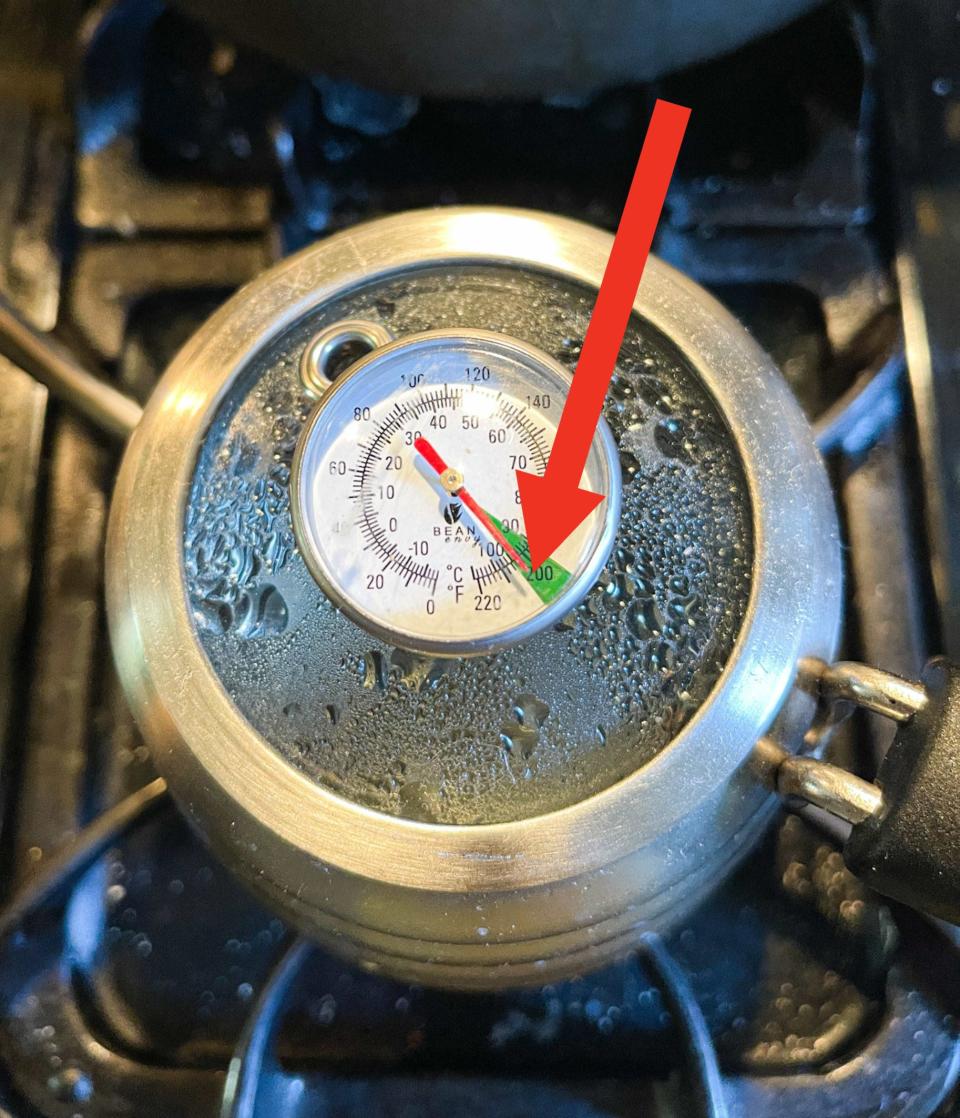
Measure out 275 grams of water and bring it to 200ºF — just under a boil. Not allowing the water to boil will produce a cup of coffee that's noticeably less bitter than coffee made with boiling water. Many coffee-specific kettles have built-in thermometers, but if your kettle doesn't, turn off the heat once the water is noticeably steamy. And just to say it, if you do make this with boiling water, no one will die. It'll still be pretty darn tasty.
WITHOUT A SCALE: You'll use about about 1 ⅓ cups of water.
STEP #2: Fill the bottom of your coffee vessel with ice.
Ross Yoder
To dilute the strong coffee as it flash-chills, you'll need about 250 grams of ice, which I add directly to the bottom half of my Chemex. If you're using a detachable coffee dripper, pour the ice into a large mason jar (or other heat-proof vessel) and place the dripper directly on top.
WITHOUT A SCALE: Measure out about 2 cups of ice, though this will vary depending on the size and shape of your ice. If your first batch tastes a bit bitter, increase the amount of ice the next time around; and if it's not strong enough, decrease the ice.
STEP #3: Grind (or just measure) your coffee.
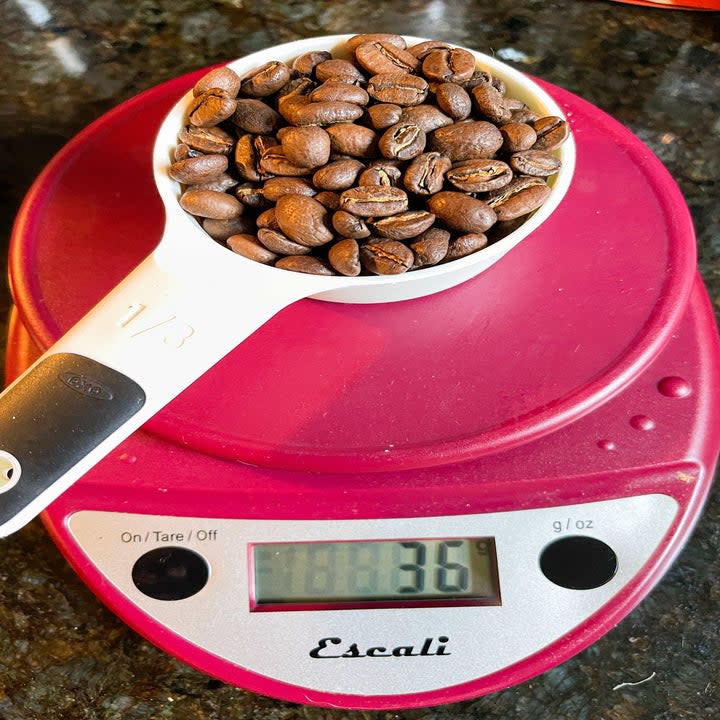
Grind 36 grams of whole coffee beans to a medium-coarse consistency — as the coffee experts say, you're looking for a grind about the size of kosher salt. Freshly grinding whole coffee beans is always preferable (as it'll yield the tastiest, freshest results) but if you want to use pre-ground coffee, I definitely won't stop you. You do you!
WITHOUT A SCALE: You'll ultimately need about 6 tablespoons of ground coffee.
STEP #4: Prepare the pour-over vessel.
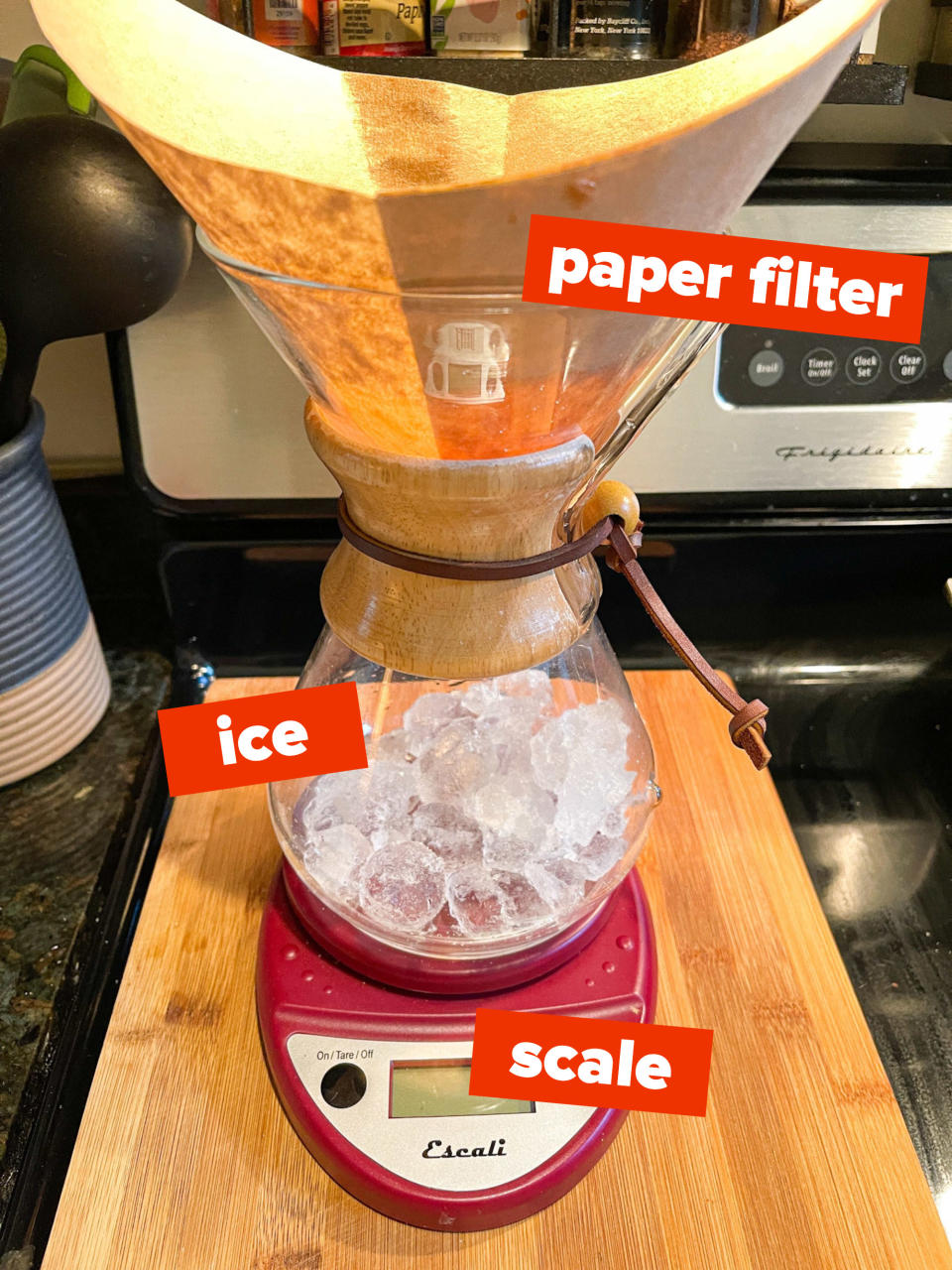
Once ice has been added to the bottom of the vessel, add a properly-fitting paper filter to the dripper — bonus points if you want to quickly rinse the filter under cool water first (to remove any "papery" tastes), but that's optional. Then, add the coffee grounds to the filter and gently shake to level the surface. Place the entire set-up on top of your kitchen scale, if using, and zero it out to 0 grams.
STEP #5: Brew!
Ross Yoder
Here's where things can get as precise or as unfussy as you'd prefer:
USING A SCALE: Slowly pour 72 grams of hot water over the coffee grounds to "bloom" the coffee, and wait 30 seconds as the coffee likely expands and bubbles. Then, slowly pour the remaining 203 grams of water over the bloomed coffee grounds in concentric circles, pausing when the water level reaches halfway up the paper filter and allowing the water to mostly drip through before resuming. Once the scale reads 275 grams, stop.
WITHOUT A SCALE: Slowly pour hot water over the coffee grounds until they're just saturated, which will "bloom" the coffee. Wait 30 seconds before continuing. Then, slowly pour the remaining hot water in your kettle over the bloomed coffee grounds in slow, even circles, making sure to pause when the water level reaches halfway up the paper filter. Allow the water to mostly drip through before you resume. It'll likely take about two additional pouring cycles, but that may vary depending on the size and shape of your pour-over device.
Either way, the brewing process itself should take about 3:00 to 3:30. You can discard the paper filter and coffee grounds once the majority of the water has passed through (and the dripping has almost entirely stopped).
And that's really it! You'll notice that the vast majority of the ice has melted and quickly cooled the hot coffee. I like to give the flash-chilled coffee a good swirl (to make sure things are as cold as possible), and then you're ready to serve. Pour the Japanese-style iced coffee into glasses with fresh ice and drink it up.
Ross Yoder
Of course, you can feel free to add milk, non-dairy creamer, sweeteners, or whatever your heart desires — but even as someone who normally can't drink coffee without a generous splash of half-and-half (I know, I'm the only millennial who puts literal cream in my coffee), I find that this method produces coffee that's easy to drink and delicious all on its own. But again, you do you. Zero judgement.
THE VERDICT: Brewing Japanese-style iced coffee produces coffee that's rich, boldly-flavored, and suuuuper smooth — and while you could certainly argue that cold brew coffee is just as drinkable, I'd say that the former excels significantly when it comes to taste. IMO, cold brew can sometimes taste a little bit watered down, but not Japanese-style iced coffee. Add in the fact that it's even more cost-efficient and requires zero planning ahead whatsoever, and I can confidently say it's become my new go-to method.
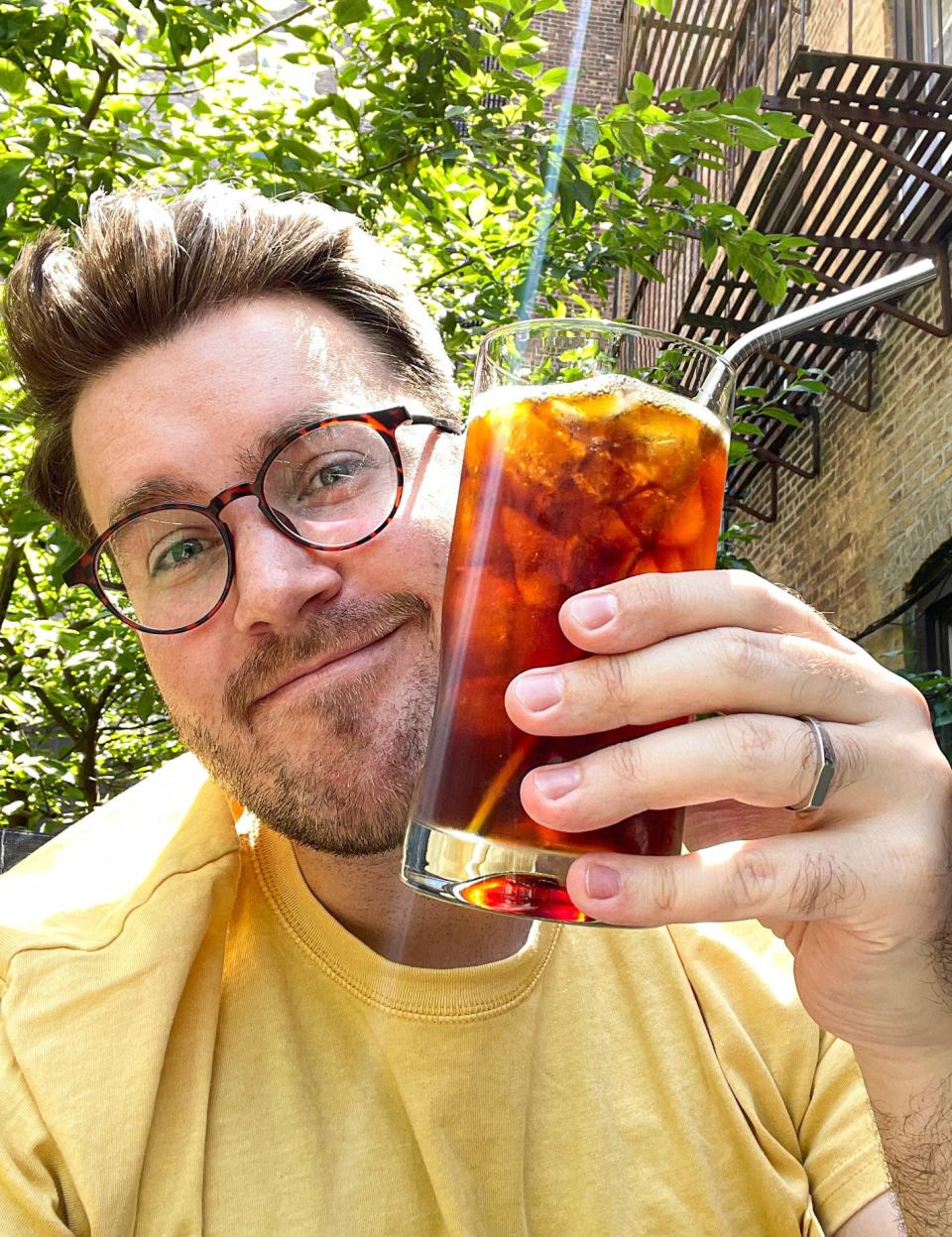
To break down the cost-efficiency a little bit more, let's do some math:
• Using the recipe above, Japanese-style iced coffee uses a coffee-to-water ratio of about 1:15. Considering the quantities above and the price of the coffee beans I used, the cost per serving comes out to just about $.75 per glass — and that's using relatively pricey coffee beans ($15.00 for 12 ounces).
• Comparatively, my favorite DIY cold brew recipe uses a coffee-to-water ratio of about 1:7. To account for the fact that the room temperature water has a harder time extracting all of that coffee goodness, using more coffee is inherently necessary. Using that ratio plus the exact quantities and coffee beans above, that cold brew method's cost per serving falls right around $1.50 per glass, which is quite literally twice as expensive as Japanese-style.
Either way, 75 cents is a whole lot cheaper than the $7 I spent on one coffee at my local café, so even if I only made my own iced coffee three times a week, I'd still save around $75 a month (!!!). Considering the fact that I'll likely be making this a permanent switch in my morning routine, we're actually talking about hundreds of dollars in savings here, folks.
I told you I'd leave you with the lowest-effort method for making an iced coffee that's similar to the directions above, and I'm keeping my promise. For this method, you'll use your standard drip coffee maker — no frills necessary.
Big disclaimer here: You might need to mess around with the ratios a bit depending on how the first batch tastes. That's because standard drip coffee machines don't extract from the coffee grounds nearly as evenly as the pour-over method, and the water itself tends to be much hotter. Both factors contribute to a very possible reality that your brew will end up stronger and more bitter than the traditional Japanese-style method would.
That said, start with the exact quantities of coffee grounds and water above and you'll pretty much brew your coffee the same way you normally would. The only exception? You'll add the listed amount of ice to the coffee pot before you hit "brew," so the hot coffee will chill instantly as it brews.
I can't promise that the results will be as downright delicious as when you make it the traditional way (technically, I can almost assure you that it won't be as good), but if you're as unfussy about your coffee as I am, I'm sure you'll agree that it's just as tasty as a fresh batch of cold brew, made with just a fraction of the effort and time.
If you've ever tried Japanese-style iced coffee (or if you're tempted to make it yourself after reading this post), let me know what you thought of it in the comments below! 👇
And if you have a secret method of iced coffee-making that you absolutely swear by, tell me all about it. I'm all ears!

